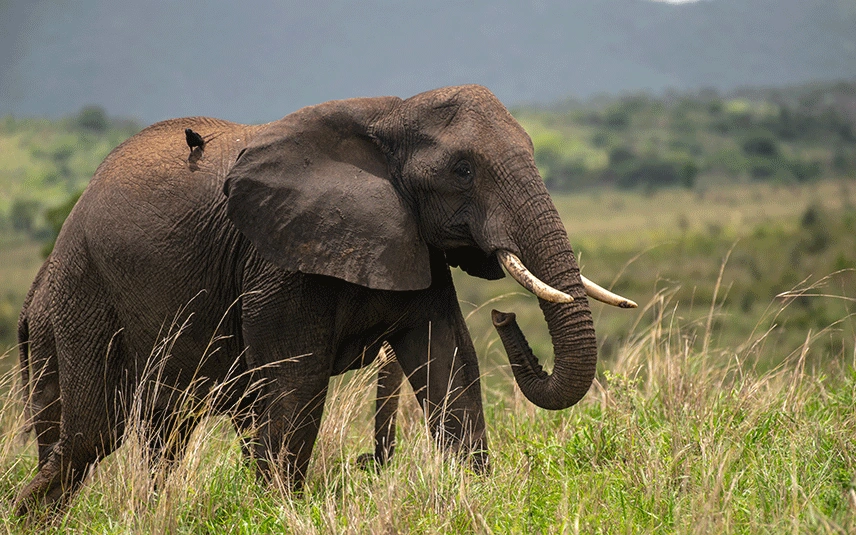Best time to visit Uganda
Best time to visit Uganda. Uganda, known as the “Pearl of Africa,” is a land of diverse landscapes, vibrant wildlife, and rich cultural heritage. The country’s equatorial climate, influenced by its altitude and proximity to the equator, makes it a year-round destination. However, understanding Uganda’s seasons and weather patterns can help you choose the ideal time to visit, depending on the experiences you seek. Here’s a comprehensive guide to Uganda’s climate and the best time to visit for activities like gorilla trekking, chimpanzee tracking, birdwatching, and wildlife safaris.
Uganda’s Climate and Seasons
Uganda has a tropical climate characterized by two main rainy seasons and two drier periods. The country has moderate temperatures year-round, ranging from 24-30°C (75-86°F) during the day, and cooling off in the evenings. The weather varies slightly by region, with the central and western parts being wetter due to mountainous areas, while the northern regions are drier.
The two main seasons are:
- Dry Seasons: December to February and June to September.
- Rainy Seasons: March to May and October to November.
Understanding Uganda’s weather patterns helps in planning a trip that aligns with your interests and desired activities.
Dry Season: June to September & December to February
Why Visit Uganda During the Dry Season?
The dry season is widely considered the best time to visit Uganda, as the weather is more predictable, and outdoor activities are more accessible. The drier conditions make trekking, safari tours, and road travel more manageable, especially in remote areas where rains can make roads muddy and challenging to navigate.
The months of June to September are particularly ideal for wildlife safaris and gorilla trekking in Bwindi Impenetrable National Park and Mgahinga Gorilla National Park, as the vegetation is less dense, making it easier to spot animals. Animals are also more likely to congregate near water sources, enhancing wildlife viewing opportunities.
Gorilla and Chimpanzee Trekking
The dry months of June to August and December to February are the best for gorilla and chimpanzee trekking. During these periods, the trails in Bwindi Impenetrable Forest, Kibale Forest, and other trekking locations are easier to navigate. The lower humidity and reduced chance of rain make for a more comfortable trekking experience, allowing trekkers to focus on the incredible encounters with primates.
Birdwatching Opportunities
For bird enthusiasts, the dry season offers clear skies and excellent visibility, making it an ideal time for birdwatching. Uganda hosts over 1,000 bird species, including endemic ones found in its national parks, wetlands, and forests. Although birdwatching is possible year-round, the dry season offers a greater chance of seeing rare species, especially in areas like Queen Elizabeth National Park, Murchison Falls, and Lake Mburo National Park.
Advantages of the Dry Season
- Trails and roads are in better condition.
- Reduced humidity and more comfortable temperatures.
- Higher concentration of wildlife around water sources.
- Ideal conditions for photography, with clearer skies and optimal lighting.
Rainy Season: March to May & October to November
Why Visit Uganda During the Rainy Season?
While the rainy season can be challenging for some activities, it has unique advantages, especially for travelers seeking fewer crowds and lower prices. Uganda’s landscapes become lush and green, creating beautiful scenery and vibrant plant life. Hotels, lodges, and trekking permits are often discounted, making it a budget-friendly time to explore the country.
The rains are usually intermittent, with heavy showers in the afternoon or evening, followed by clear skies. This means that despite the rain, many activities remain possible, especially for those who don’t mind a bit of mud.
Gorilla Trekking in the Rainy Season
Although trekking trails may be muddier and more challenging, gorilla trekking is still possible during the rainy months. The dense foliage provides ample cover, and gorillas tend to stay closer to the lower slopes, which can make the trek slightly shorter. Additionally, with fewer tourists, visitors can enjoy a more private and intimate experience with the gorillas, making the rainy season ideal for those seeking a more solitary encounter.
Birdwatching in the Rainy Season
The rainy season is Uganda’s peak birdwatching period, as it coincides with the arrival of migratory birds from Europe and North Africa. Uganda’s wetlands and forests come alive with activity, making it an excellent time to spot species like the African green broadbill, shoebill stork, and the Great Blue Turaco. The lush landscapes and blooming flora also enhance birdwatching experiences, with vibrant natural backdrops perfect for photographers.
Advantages of the Rainy Season
- Lush green landscapes and stunning scenery.
- Fewer tourists, providing a quieter experience at popular destinations.
- Lower accommodation rates and discounted gorilla permits.
- Peak migratory birdwatching season with diverse species.
Month-by-Month Guide
- January-February: Dry and warm, ideal for gorilla trekking, chimpanzee tracking, and safaris.
- March-May: Rainy season, best for birdwatching; lower crowds and discounted rates.
- June-August: Peak dry season, best for all activities, including gorilla trekking and safaris.
- September: End of the dry season, excellent for safaris and primate trekking.
- October-November: Rainy season resumes; good for budget travelers and birdwatching.
- December: Dry season returns, popular for holiday travelers, great for all activities.
Special Considerations for Planning Your Visit
When planning a trip to Uganda, it’s essential to consider not only the season but also other factors like altitude, as temperatures can vary significantly between regions. Pack accordingly, with lightweight clothing for warm daytime temperatures and a waterproof jacket for rain. Proper footwear is crucial, especially if you plan to trek during the rainy season, when trails can be slippery.





